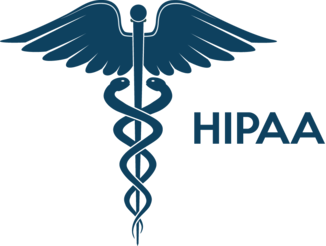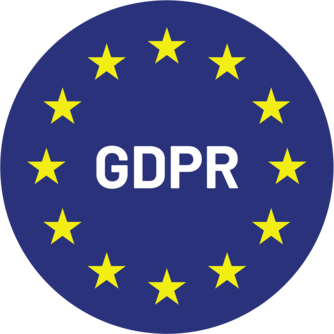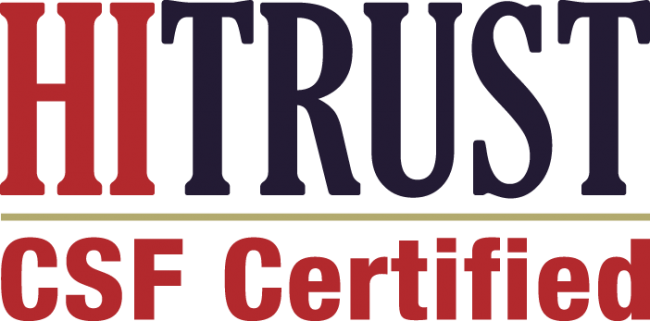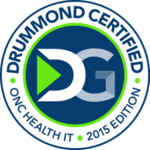The healthcare landscape has undergone a dramatic transformation in recent years, with technology playing an increasingly vital role in delivering personalized, accessible care. At the forefront of this revolution is Remote Physiologic Monitoring (RPM), a game-changing approach that’s reshaping how patients and healthcare providers interact, monitor health conditions, and deliver targeted interventions. This innovative technology is not just improving health outcomes; it’s making quality healthcare more accessible than ever before.
Understanding Remote Physiologic Monitoring
Remote Physiologic Monitoring represents a paradigm shift from traditional reactive healthcare to proactive, continuous health management. RPM involves the use of digital technologies to collect and transmit patient health data from outside conventional healthcare settings, typically from the patient’s home. This real-time data collection enables healthcare providers to monitor patients’ vital signs, symptoms, and health metrics continuously, allowing for timely interventions and personalized care adjustments.
The technology encompasses a wide range of monitoring devices, from simple blood pressure cuffs and glucose monitors to sophisticated wearable devices that track heart rate, oxygen saturation, sleep patterns, and activity levels. What makes RPM truly revolutionary is its ability to provide healthcare providers with a comprehensive, real-time picture of a patient’s health status, enabling more informed decision-making and personalized treatment plans.
The CMS Recognition and Medicare Coverage Revolution
The Centers for Medicare & Medicaid Services (CMS) has played a pivotal role in legitimizing and expanding access to RPM services. Recognizing the potential of remote monitoring to improve patient outcomes while reducing healthcare costs, CMS introduced specific billing codes for RPM services in 2019, with significant expansions in 2020 and beyond.
Under current CMS guidelines, Medicare covers RPM services through several specific Current Procedural Terminology (CPT) codes:
- CPT 99453: Initial setup and patient education for RPM
- CPT 99454: Supply of RPM device and daily recording/transmission of physiologic data
- CPT 99457: Initial 20 minutes of clinical staff time for RPM treatment management services
- CPT 99458: Additional 20 minutes of clinical staff time for RPM treatment management services
- CPT 99091: Collection and interpretation of physiologic data
This Medicare coverage represents a significant milestone, as it acknowledges RPM as a legitimate and valuable healthcare service. The coverage extends to patients with acute or chronic conditions who require monitoring, making these services accessible to millions of Medicare beneficiaries who previously might not have had access to such advanced monitoring capabilities.
Key Requirements and Benefits of Medicare’s RPM Program
Medicare’s RPM program has specific requirements designed to ensure quality care and appropriate utilization:
Patient Eligibility Requirements:
- Must have a chronic or acute medical condition requiring monitoring
- No geographic restrictions (unlike some telehealth services)
- Can be provided to both new and established patients
- Requires physician or qualified healthcare professional orders
Device and Data Requirements:
- Devices must be FDA-approved or cleared
- Must automatically collect and transmit data
- Minimum of 16 days of data collection per 30-day period
- Data must be reviewed by clinical staff
Provider Requirements:
- Services must be provided under the direction of a physician or qualified healthcare professional
- Clinical staff must spend at least 20 minutes per month on treatment management services
- Must maintain comprehensive documentation of services provided
The benefits of Medicare coverage for RPM are substantial. Patients gain access to continuous monitoring without the financial burden that previously made such services inaccessible to many. Healthcare providers can deliver more comprehensive care while receiving appropriate reimbursement for their services. This coverage has democratized access to advanced healthcare monitoring, particularly benefiting elderly patients and those with chronic conditions who are at higher risk for complications.
How RPM Transforms Access to Personalized Healthcare
Breaking Down Geographic Barriers
One of the most significant ways RPM enhances healthcare access is by eliminating geographic limitations. Patients in rural or underserved areas, who previously faced challenges in accessing specialized care, can now receive continuous monitoring and expert oversight from the comfort of their homes. This geographic flexibility is particularly valuable for elderly patients or those with mobility limitations who find it difficult to travel to healthcare facilities regularly.
Enabling Continuous Care Monitoring
Traditional healthcare operates on an episodic model, patients visit healthcare providers when they’re sick or for periodic check-ups. RPM transforms this model by enabling continuous monitoring, allowing healthcare providers to detect changes in a patient’s condition before they become serious problems. This proactive approach leads to earlier interventions, better outcomes, and often prevents expensive emergency room visits or hospital admissions.
Personalizing Treatment Plans with Real-World Data
RPM provides healthcare providers with unprecedented access to real-world health data. Instead of relying solely on periodic office visits that capture health status at a single point in time, providers can now see patterns and trends in a patient’s health metrics over weeks and months. This comprehensive data enables truly personalized treatment plans based on individual patient responses, lifestyle factors, and health patterns.
Improving Patient Engagement and Self-Management
When patients can see their own health data in real-time, they become more engaged in their healthcare management. RPM platforms often include patient portals that allow individuals to track their progress, understand how lifestyle choices affect their health metrics, and take a more active role in their care. This engagement leads to better adherence to treatment plans and improved health outcomes.
Reducing Healthcare Costs
By enabling early detection of health issues and preventing complications, RPM can significantly reduce overall healthcare costs. Studies have shown that RPM programs can reduce hospital readmissions, emergency department visits, and the need for expensive interventions. For Medicare beneficiaries, this translates to both individual cost savings and broader system efficiencies.
HealthViewX RPM: Leading the Personalized Healthcare Revolution
In the rapidly evolving RPM landscape, HealthViewX has emerged as a leader in delivering comprehensive, user-friendly remote monitoring solutions that exemplify the principles of personalized healthcare access. The HealthViewX RPM platform represents a holistic approach to remote patient monitoring that addresses the key challenges and opportunities in modern healthcare delivery.
Comprehensive Monitoring Capabilities
HealthViewX RPM supports a wide range of monitoring devices and health metrics, from basic vital signs to complex chronic disease indicators. The platform seamlessly integrates with various FDA-approved devices, including blood pressure monitors, glucose meters, pulse oximeters, weight scales, and advanced wearable devices. This flexibility allows healthcare providers to customize monitoring protocols based on individual patient needs and conditions.
The platform’s ability to handle multiple data streams simultaneously makes it particularly valuable for patients with multiple chronic conditions, a common scenario among Medicare beneficiaries. Rather than managing separate monitoring systems for different conditions, patients and providers can access all relevant health data through a single, integrated platform.
Advanced Analytics and Clinical Decision Support
What sets HealthViewX RPM apart is its sophisticated analytics engine that transforms raw health data into actionable clinical insights. The platform uses advanced algorithms to identify trends, detect anomalies, and predict potential health issues before they become critical. This predictive capability enables healthcare providers to deliver truly personalized care by adjusting treatment plans based on individual patient patterns and responses.
The clinical decision support features help healthcare providers prioritize patient care, identifying which patients require immediate attention and which are stable. This intelligent triage system ensures that clinical resources are allocated efficiently while maintaining high standards of patient care.
Seamless Integration with Clinical Workflows
HealthViewX RPM is designed to integrate seamlessly with existing clinical workflows and electronic health record systems. This integration ensures that RPM data becomes part of the patient’s comprehensive health record, providing healthcare providers with a complete picture of the patient’s health status. The platform’s intuitive interface minimizes the learning curve for clinical staff while maximizing the value of collected data.
Patient-Centric Design
The HealthViewX RPM platform prioritizes patient experience and engagement. The patient portal provides easy-to-understand visualizations of health data, educational resources, and communication tools that keep patients connected with their healthcare teams. This focus on patient engagement aligns with the broader goal of making healthcare more accessible and personalized.
Compliance with CMS Requirements
HealthViewX RPM is specifically designed to meet all CMS requirements for Medicare RPM reimbursement. The platform automatically tracks the necessary metrics for billing compliance, including data collection frequency, clinical staff time, and documentation requirements. This built-in compliance support helps healthcare providers maximize their ability to provide RPM services while ensuring appropriate reimbursement.
The Future of Personalized Healthcare Through RPM
As we look toward the future, Remote Physiologic Monitoring represents just the beginning of a broader transformation in healthcare delivery. The combination of advanced monitoring technologies, artificial intelligence, and personalized medicine is creating unprecedented opportunities to deliver truly individualized healthcare.
The expansion of Medicare coverage for RPM services signals a fundamental shift in how we think about healthcare delivery. By recognizing and reimbursing for continuous monitoring and remote care management, CMS is paving the way for a more proactive, preventive healthcare system that prioritizes patient outcomes over volume of services.
For patients, this transformation means greater access to high-quality healthcare regardless of geographic location, physical limitations, or other traditional barriers. The ability to receive personalized care based on continuous monitoring and real-time data represents a significant improvement over traditional episodic care models.
For healthcare providers, RPM offers the opportunity to deliver more comprehensive, effective care while improving practice efficiency and patient satisfaction. The integration of platforms like HealthViewX RPM into clinical practice enables providers to manage larger patient populations while maintaining high standards of personalized care.
Conclusion: A New Era of Accessible, Personalized Healthcare
Remote Physiologic Monitoring is fundamentally changing the healthcare landscape, making personalized, high-quality care more accessible than ever before. The recognition and coverage of RPM services by CMS and Medicare represents a crucial step toward a more equitable healthcare system that prioritizes patient outcomes and accessibility.
Platforms like HealthViewX RPM are leading this transformation by providing comprehensive, user-friendly solutions that meet the complex needs of patients, providers, and healthcare systems. By combining advanced monitoring capabilities with intelligent analytics and patient engagement tools, these platforms are making the promise of personalized healthcare a reality for millions of patients.
As we continue to embrace and expand RPM capabilities, we move closer to a healthcare system that is truly patient-centered, accessible, and personalized. The future of healthcare is not just about treating illness, it’s about empowering individuals to take control of their health with the support of advanced technology and dedicated healthcare professionals.
The revolution in personalized healthcare access through Remote Physiologic Monitoring has only just begun, and the potential for improving health outcomes and quality of life for patients across all demographics continues to grow. With continued support from CMS, innovative platforms like HealthViewX RPM, and the dedication of healthcare providers, we are building a healthcare system that truly serves the individual needs of every patient.



